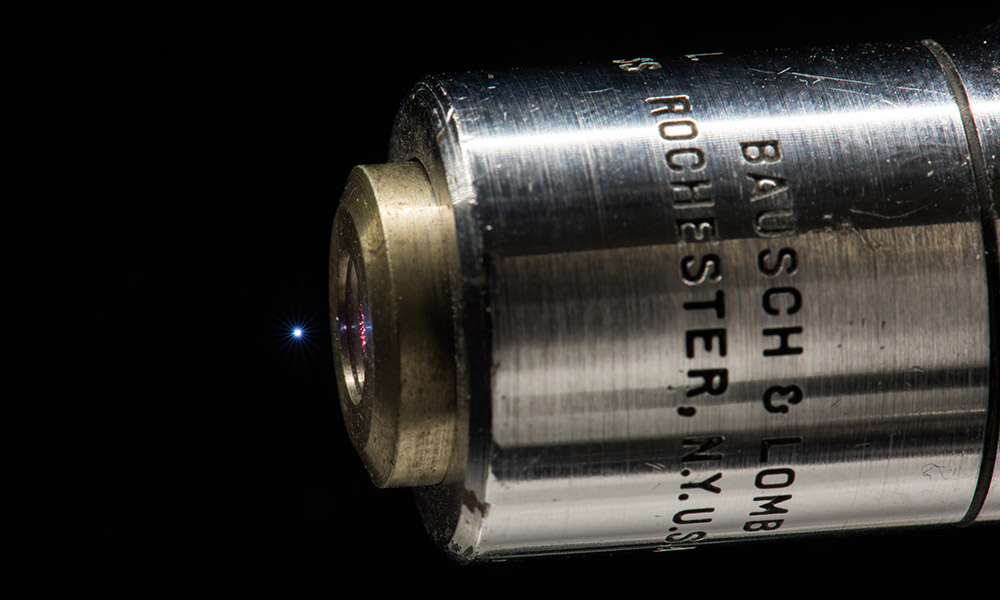Researchers at the University of Rochester’s Institute of Optics have shown that a laser-generated microplasma in air can be used as a source of broadband terahertz radiation.
In a paper published this week in Optica, Fabrizio Buccheri and Xi-Cheng Zhang demonstrate that an approach for generating terahertz waves using intense laser pulses in air – first pioneered in 1993 – can be done with much lower power lasers, a major challenge until now. Ph.D. student and lead author Buccheri explains that they exploited the underlying physics to reduce the necessary laser power for plasma generation. He adds that it could potentially be improved for applications in explosives or drug monitoring.
Buccheri explains that applications for terahertz radiation, a form of electromagnetic radiation named after its frequency, can be divided into two categories: imaging and spectroscopy. Imaging using terahertz waves is similar to imaging using X-rays, but unlike X-rays it is not a form of ionizing radiation. Imaging with terahertz can, for example, allow us to look under layers of painting. For imaging applications, a narrow range of terahertz frequencies is needed. He adds that this can be generated using specific terahertz devices, such as diodes or lasers. However, for spectroscopy applications, “such as analyzing food for poisons or baggage for drugs or explosives it is useful for the terahertz radiation to be as ‘broadband’ as possible,” according to Buccheri. That is, it contains waves of many different frequencies within the terahertz range. For this, a plasma is needed.
Buccheri explains that spectroscopy works by looking at which frequencies are absorbed by certain materials. Different materials have different spectra – they have peaks and troughs at different frequencies. But depending on the spectral resolution, these features might look very similar for the different materials.
“Spectroscopy is like taking a picture,” said Buccheri. “If the camera has a low resolution, the resulting image might be blurry and the object difficult to identify.”
For common applications, however, higher spectral resolution is not feasible as it is more costly and requires more sophisticated equipment. In these cases, more points of comparison are needed, just like in fingerprint analysis. The more points of comparison that are available, the more precise the analysis, and this is what a broadband source can provide, says Buccheri.
“If you were only using a source of radiation with a range around 1 terahertz you might not be able to tell two different materials apart at low spectral resolution, as you might only have one feature in the spectrum to compare,” added Buccheri. “If instead you compare their spectra over a range of tens of terahertz, the ‘fingerprints’ of the two materials will differ and the materials will be more clearly identifiable, even at lower spectral resolutions.”
Until now, approaches to use a plasma as a broadband source of terahertz have commonly used an elongated plasma generated by combining together two laser beams of different frequencies, i.e., colors. This technique, usually referred to as “two-color” approach, requires powerful, expensive lasers. The “one-color” approach uses single laser frequency to generate the plasma. Pioneered by Harald Hamster and colleagues in 1993, it required even higher laser energies and therefore it was not explored further until this recent paper by Buccheri and Zhang.
Buccheri explains that he has always been interested in the polarization of light and how it can be exploited for different uses. He was interested in certain polarization states that exist for a beam of light: azimuthal or radial polarization. In these states, the electric field is either perpendicular to the radial axis or radial at each given point. “I wanted to see if by creating a plasma with a laser in one of these “weirder” polarization states I could make the terahertz emission more efficient,” said Buccheri. “That didn’t work. But when I understood why it didn’t work, I really understood the underlying physics.” He adds that he was then able to exploit the physics to use lower laser energies than previously thought possible to generate broadband terahertz waves in air. The trick was to replace elongated plasmas, with lengths ranging from few millimeters to several centimeters, with a microplasma, about the width of a human hair. He thinks that fine tuning the type of laser used and changing the air to a different gas could enable even lower operation powers.
An advantage of this “one-color” approach to terahertz radiation is the fact that the terahertz waves propagate in a different direction to the laser beam. This makes it easier for potentially coupling the terahertz waves to a wave guide on a microchip, for example.
The researchers received funding from the NSF and the Army Research Office.
Full reference for the paper: Terahertz emission from laser-induced microplasma in ambient air, Fabrizio Buccheri and Xi-Cheng Zhang, Optica, Vol. 2, Issue 4, pp. 366-369 (2015). http://dx.doi.org/10.1364/OPTICA.2.000366




